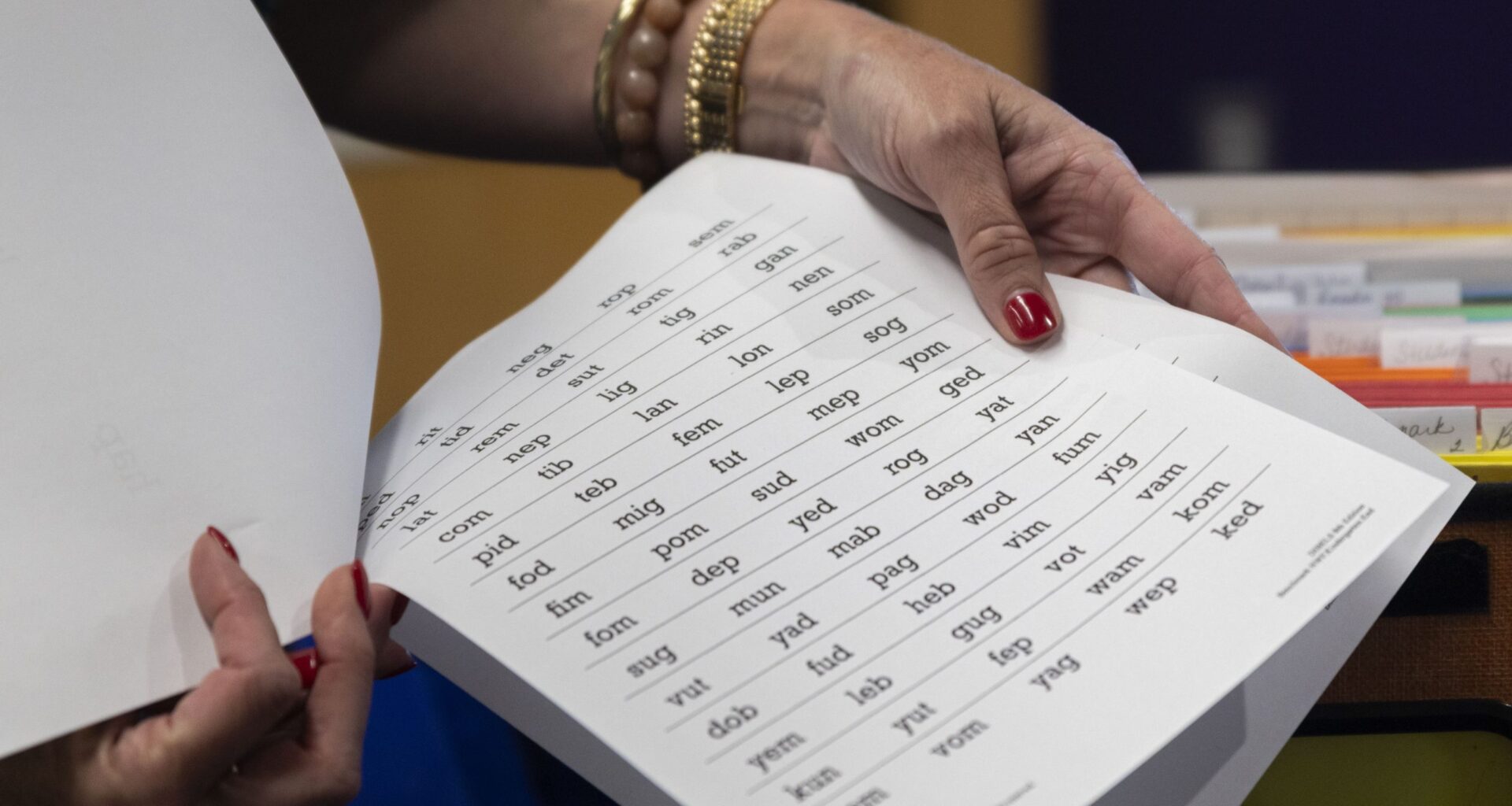All Northwest ISD students receiving dyslexia instruction are now identified through special education.
Micah Gierkey, the district’s executive director of student support services, told school trustees Oct. 7 that the district met new Texas dyslexia guidelines nearly a year before a May deadline.
Each student identified as having potential dyslexia now undergoes a full dyslexia evaluation and, if eligible, receives a plan that outlines the specific help in reading the child gets.
“This is the perfect month to share this update since October is Dyslexia Awareness Month,” Gierkey told trustees.
The 33,500-student district identified 3,224 with dyslexia, including:
1,904 who receive special education services.
1,061 who receive classroom adjustments such as extra time on tests or reading assistance.
259 who do not require additional support.
Northwest uses two multisensory reading programs — Reading by Design and the Multisensory Teaching Approach — which engage students through visual, auditory, kinesthetic and tactile learning pathways.
Both are taught four to five times a week in small groups of six to eight students.
Early screening remains central to the district’s work, Gierkey said. Each year, Northwest screens all kindergarten and first-grade students to identify those who may need additional reading support or dyslexia services.
During last year’s screenings, Northwest referred 140 first graders in December and 73 kindergartners in the spring for further evaluation.
District data shows that about 1 in 3 students in Northwest’s dyslexia programs met grade level on reading, according to 2025 STAAR results. In 2025, 31% of those students met grade level or higher on the state’s reading and English exams — roughly consistent with the past two years.
window.addEventListener(“message”,function(a){if(void 0!==a.data[“datawrapper-height”]){var e=document.querySelectorAll(“iframe”);for(var t in a.data[“datawrapper-height”])for(var r,i=0;r=e[i];i++)if(r.contentWindow===a.source){var d=a.data[“datawrapper-height”][t]+”px”;r.style.height=d}}});
The district also uses the Northwest Evaluation Association’s Measures of Academic Progress, or MAP, to track how much students grow in reading during the school year. More than half of dyslexic students met or exceeded their individual growth goals, surpassing the district’s 50% target.
Students who finish the district’s intervention program tend to perform even stronger, according to the presentation.
Among those who completed the Multisensory Teaching Approach, 52% of elementary and middle school students and 59% of high school students met or exceeded grade-level expectations on STAAR.
window.addEventListener(“message”,function(a){if(void 0!==a.data[“datawrapper-height”]){var e=document.querySelectorAll(“iframe”);for(var t in a.data[“datawrapper-height”])for(var r,i=0;r=e[i];i++)if(r.contentWindow===a.source){var d=a.data[“datawrapper-height”][t]+”px”;r.style.height=d}}});
window.addEventListener(“message”,function(a){if(void 0!==a.data[“datawrapper-height”]){var e=document.querySelectorAll(“iframe”);for(var t in a.data[“datawrapper-height”])for(var r,i=0;r=e[i];i++)if(r.contentWindow===a.source){var d=a.data[“datawrapper-height”][t]+”px”;r.style.height=d}}});
Gierkey also highlighted expanded training and collaboration.
Nearly all 57 dyslexia teachers now hold a special education certification. More than two dozen are pursuing advanced credentials as academic language therapists or practitioners.
Superintendent Mark Foust said some in the community had raised concerns that changes to the dyslexia program meant serving fewer students. The opposite is true, Gierkey said.
“We are serving them more efficiently,” she said. “We looked at schedules and realized we could reach more students by grouping them appropriately and ensuring multiple staff on campus were trained to teach to those needs.”
Matthew Sgroi is an education reporter for the Fort Worth Report. Contact him at matthew.sgroi@fortworthreport.org or @matthewsgroi1.
At the Fort Worth Report, news decisions are made independently of our board members and financial supporters. Read more about our editorial independence policy here.
This <a target=”_blank” href=”https://fortworthreport.org/2025/10/14/northwest-isd-overhauls-how-it-teaches-students-with-dyslexia-heres-what-changed/”>article</a> first appeared on <a target=”_blank” href=”https://fortworthreport.org”>Fort Worth Report</a> and is republished here under a <a target=”_blank” href=”https://creativecommons.org/licenses/by-nd/4.0/”>Creative Commons Attribution-NoDerivatives 4.0 International License</a>.<img src=”https://i0.wp.com/fortworthreport.org/wp-content/uploads/2021/04/cropped-favicon.png?resize=150%2C150&quality=80&ssl=1″ style=”width:1em;height:1em;margin-left:10px;”><img id=”republication-tracker-tool-source” src=”https://fortworthreport.org/?republication-pixel=true&post=309585&ga4=2820184429″ style=”width:1px;height:1px;”><script> PARSELY = { autotrack: false, onload: function() { PARSELY.beacon.trackPageView({ url: “https://fortworthreport.org/2025/10/14/northwest-isd-overhauls-how-it-teaches-students-with-dyslexia-heres-what-changed/”, urlref: window.location.href }); } } </script> <script id=”parsely-cfg” src=”//cdn.parsely.com/keys/fortworthreport.org/p.js”></script>

